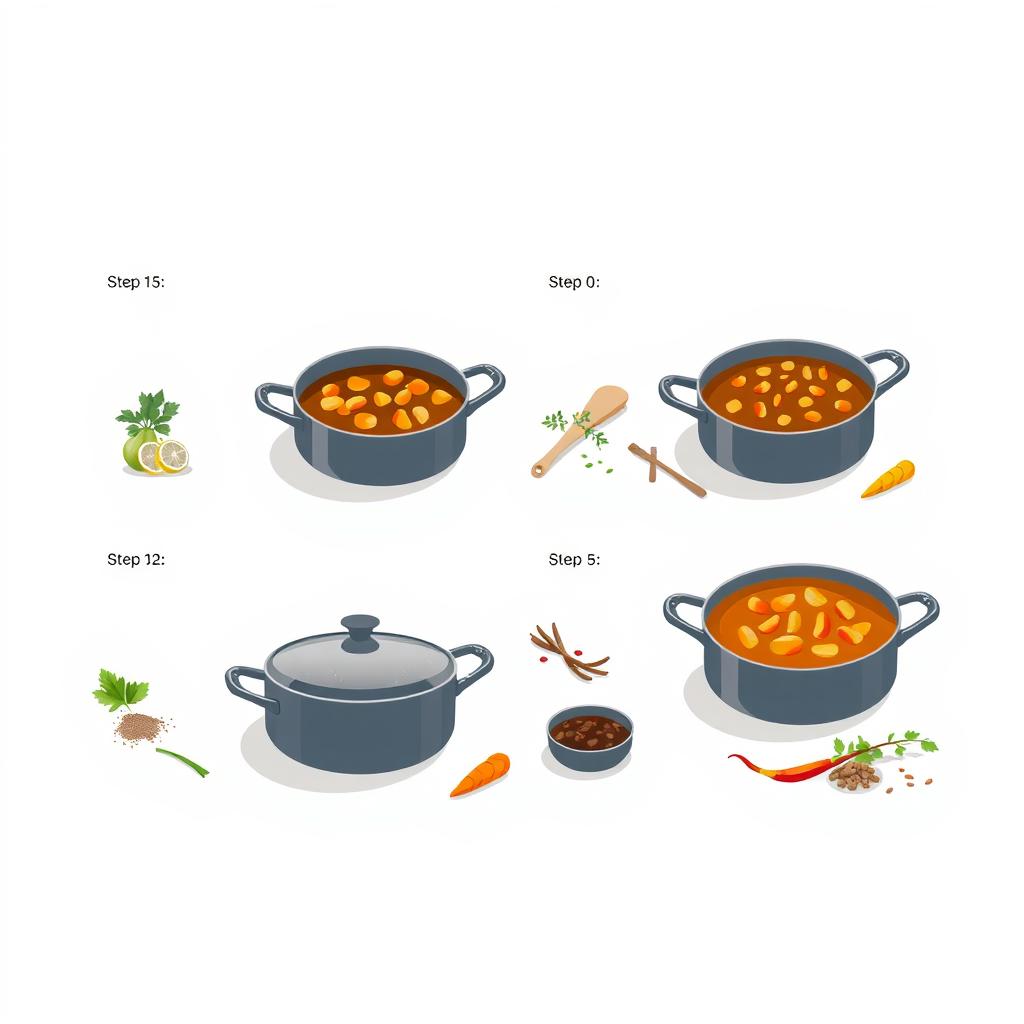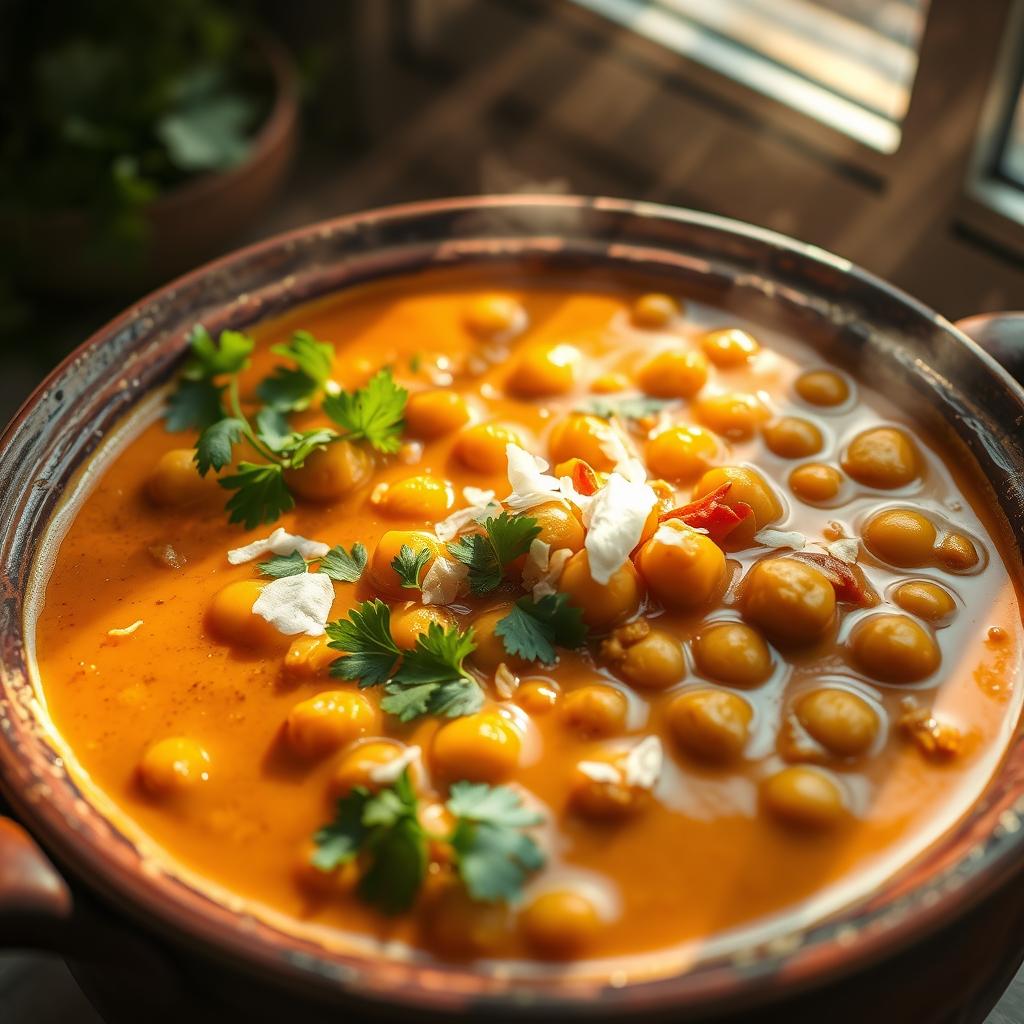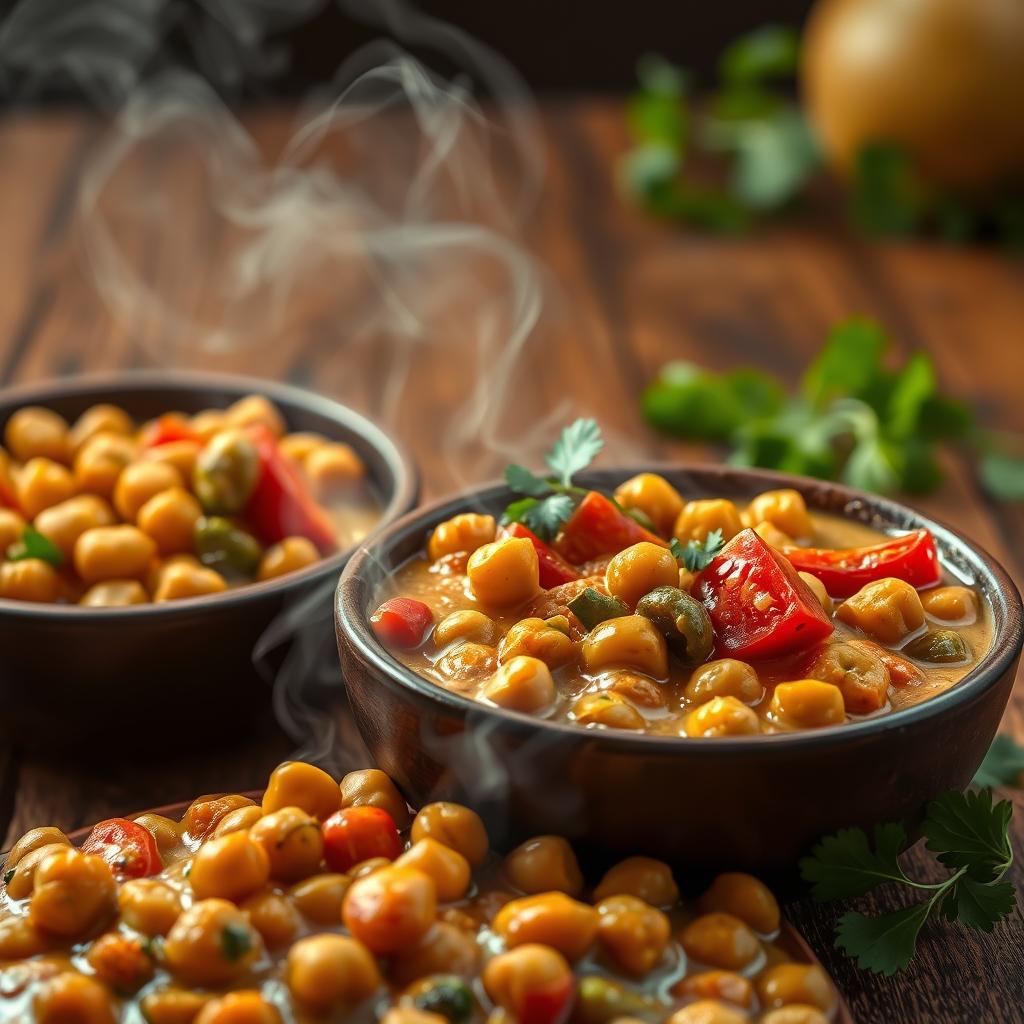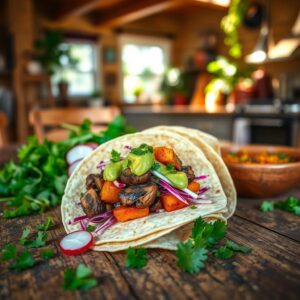Do you believe a weeknight meal can match restaurant flavor in under 30 minutes?
vegan curry recipes open the door to one-pot chickpea bowls that use pantry staples like onion, garlic, ginger, tomatoes, coconut milk, and spinach.
This guide shows you a reliable framework: sauté aromatics, bloom spices, add tomatoes and stock, then simmer with chickpeas until the sauce is rich and silky.
You’ll learn how to get big flavor with less cleanup and how to serve the dish with rice, quinoa, or flatbreads so dinner feels complete fast.
The approach borrows from Indian, Thai, and Caribbean techniques to build layers of spice while staying approachable for newer cooks.
Along the way, you’ll find tips for make-ahead, freezing, and reheating, plus links to trusted resources like Forks Over Knives for deeper reading.
Key Takeaways
- One-pot methods speed dinner and cut cleanup.
- Simple aromatics and coconut elements create a rich sauce.
- A flexible template lets you cook for mixed-diet crowds.
- Timing and make-ahead tips save you time on busy nights.
- Serve with rice, quinoa, or flatbread for a balanced meal.
Why you’ll love these vegan curry recipes right now
If you want bold taste fast, these one-pot dishes prove big flavor doesn’t need long effort. In about 30 minutes you follow a clear rhythm—sauté, bloom spices, add liquid, simmer—and end with greens and acid for brightness.
Combine curry powder and paste to get both Indian-style depth and Thai-style creaminess. Chickpeas or tofu act as reliable protein that soaks up sauce, so each bite feels filling and satisfying.
These meals use adaptable vegetables—cauliflower, zucchini, spinach—that keep texture through quick simmering. That means you get a balanced plate with minimal hands-on time.
- Blooming spices release aroma and layered complexity in every bite.
- Quick simmering concentrates taste so you don’t need hours on the stove.
- Scale up for meal prep; leftovers reheat well and keep texture.
- Control heat easily for milder or spicier results.
Bottom line: This method gives you a fast, budget-friendly meal that’s hearty, flavorful, and built to be cooked again and again.
Ingredient notes for rich, creamy curry
Let aromatics and measured spices do the heavy lifting. Start simple: a yellow onion, fresh garlic, and grated ginger form a savory-sweet backbone. Add fresh thyme for a bright lift that pairs with warm spices.
Aromatics that build bold flavor: onion, garlic, ginger, and thyme
Sauté the onion until soft, then add garlic and ginger so they bloom without burning. Thyme adds a subtle herb note that keeps the sauce lively as it simmers.
Spices that matter: curry powder, cumin, turmeric, garam masala, and more
Choose a curry powder you like, then deepen it with cumin, turmeric, and a pinch of garam masala. A dash of red pepper flakes brings heat. Measure spices by the teaspoon so they bloom evenly and deliver consistent flavor.
Coconut milk choices: full-fat vs lite for texture and flavor
Full-fat canned coconut milk makes a luxuriously creamy sauce; lite milk keeps fat lower while still adding silkiness. Use vegetable stock to thin the sauce without losing body.
Plant proteins and vegetables: chickpeas, spinach, cauliflower, and zucchini
Rely on chickpeas for quick protein and add spinach at the end to wilt. Roasted cauliflower or zucchini make sturdy, tender swaps that hold texture as the sauce reduces.
Pantry boosters: tomato paste, vegetable stock, salt, and pepper
Lean on fresh or canned tomatoes for body and stir in a tablespoon of tomato paste to intensify umami. Season with salt in stages and keep stock nearby to adjust consistency.
- Your ingredients can flex—canned tomatoes or different greens still yield a rich result.
- Measure spices carefully and taste as you go for the best balance.
Step-by-step vegan curry recipes method

Follow a clear, step-by-step method to build flavor from the pan up. Work in short stages so you control timing and texture. The whole process fits a busy weeknight and keeps cleanup minimal.
Saute the base over medium heat
Heat oil in a heavy pot over medium heat. Add diced onion and cook until soft. Stir in minced garlic and grated ginger for about 30–60 seconds so they release aroma without burning.
Build the sauce
Add chopped tomatoes and press them to break down. Whisk a teaspoon of tomato paste with a splash of water, then stir it in. Sprinkle in curry powder and other spices, then pour about a cup of coconut milk or other milk. Stir until the sauce is smooth.
Simmer and finish
Add drained chickpeas, bring to a gentle simmer, and cook 20–25 minutes until the sauce thickens and glazes the legumes. Fold in spinach at the end so it wilts quickly. Taste and adjust salt. Finish with a squeeze of citrus if you like.
| Step | Time (minutes) | Key action |
|---|---|---|
| Sauté base | 5–7 | Heat oil, soften onion, add garlic and ginger |
| Build sauce | 3–5 | Stir tomatoes, tomato paste, spices, and coconut milk |
| Simmer & finish | 20–25 | Add chickpeas, reduce until creamy, wilt spinach, adjust salt |
Customize your curry: variations and swaps
You can tweak heat, texture, and allergens without changing your core method. Choose a mild powder or add a pinch of red pepper flakes to raise heat slowly.
Use curry paste sparingly—a measured tablespoon gives a bold kick. Read labels: some pastes include fish, so check for vegan-friendly wording.
Allergy‑friendly and oil‑free options
Swap coconut milk for creamy oat or soy milk if you avoid coconut. Canned tomatoes work instead of fresh for a pantry-friendly path.
Go oil-free by water-sautéing the onion and spices. Use lite coconut milk or oat milk to cut fat and still keep a smooth mouthfeel.
“Bloom spices in a little liquid to release aroma—this preserves flavor even when you skip oil.”
- Lean on cauliflower and tender beans for extra body.
- Adjust heat with a teaspoon at a time to avoid overpowering the sauce.
- Balance salt at the end after reductions to round the dish.
| Swap | Why | How much |
|---|---|---|
| Powder choice | Controls base heat and color | 1–2 teaspoons, add red pepper to taste |
| Milk substitute | Allergen-friendly, keeps creaminess | Replace coconut milk 1:1 with oat or soy |
| Oil-free method | Lower fat, simple cleanup | Water sauté; use lite milk and simmer ~20–25 minutes |
Serving your vegan curry recipes
A well-served bowl balances warm grains, glossy sauce, and bright, crunchy toppings.
Spoon the curry over fluffy rice so the grains soak up flavor without going mushy. You pick basmati rice for a fragrant, long-grain pairing, or swap in quinoa for a nuttier bite and faster cook time.
Warm a piece of vegan naan to swipe every last cup of sauce and make the dish feel restaurant-worthy. Add a few cups of quick-wilted spinach on the side to boost color and greens.
Finishing touches
- Squeeze lemon or lime to cut through coconut richness and sharpen the overall flavor.
- Scatter scallions and a pinch of pepper flakes for color and gentle heat.
- Toss roasted cashews or peanuts on top for crunch if no one has allergies.
- Serve with a simple cucumber salad to cool the palate between spicy bites.
- Plate in wide bowls so rice, curry, and toppings nestle neatly and stay warm.
| Accompaniment | Why it works | Portion idea |
|---|---|---|
| Rice | Soaks sauce, keeps texture | 1 cup cooked per person |
| Basmati rice | Fragrant and light; pairs well with spices | 1 cup cooked per person |
| Vegan naan | Great for scooping and savoring sauce | 1–2 pieces per person |
| Spinach | Fresh greens for color and nutrition | 2 cups wilted per recipe batch |
Nutrition, protein, and time-saving tips

Understanding the nutrition of a chickpea-and-coconut bowl helps you plan portions and tweak fat and sodium safely.
Calories, fat, and protein in a chickpea coconut curry
A typical cup delivers about 313 calories, 10g protein, 21g fat (14g saturated), 27g carbs and 8g fiber.
Vitamins A and C vary by which vegetables you add. Sodium depends on how much salt and stock you use.
From prep to plate in about 30 minutes
Plan for 10 minutes of prep and 20 minutes simmering. One-pot cooking saves cleanup and preserves flavor.
- Portions: servings give moderate calories and solid fiber from the beans.
- Cut fat: use lite coconut or thin with stock to lower saturated fat.
- Boost protein: add extra beans or tofu and serve with higher-protein grains.
- Micronutrients: fold in spinach or bell peppers near the end for extra vitamin punch.
- Sodium control: wait to add salt until after reduction and choose low-sodium stock.
Make-ahead, storage, and freezing for busy days
Smart storage turns one pot of sauce into several ready meals. Cool the pan briefly, then move the curry to shallow, airtight containers so it chills quickly and safely.
Refrigerate safely: cool completely and store for up to 5 days
Refrigerate within two hours. Once cool, seal and label containers with the cook date. Store in the fridge for up to 5 days.
When reheating, warm gently on low and add a splash of water if the sauce tightens. Stir in fresh spinach near the end so it stays bright and tender.
Freeze and reheat: batch-cook and thaw for easy weeknight meals
Portion by the cup into freezer-safe containers leaving headspace to allow expansion. Freeze for up to three months and note the date on each lid.
- Thaw overnight in the fridge to preserve texture.
- Reheat over low heat, stirring to re-emulsify the sauce.
- Refresh flavor with a squeeze of lemon and a pinch of salt after warming.
- Cook a fresh pot of rice or re-steam leftover rice with a little water so grains stay fluffy.
Further reading and recipe inspiration
Want more inspiration? The links below deliver practical tips, fast meals, and pantry-smart ideas you can use tonight. These resources cover technique, timing, and flavor so you can adapt a curry recipe to your pantry and taste.
Explore more plant-based ideas on Oh She Glows — soups, mains, and tips
Oh She Glows offers a broad archive of plant-forward dishes, clear how-tos, and meal plans that complement one-pot dinners. Use it to bookmark weeknight mains and make-ahead guides.
Curry powder vs curry paste: how each shapes flavor and heat
Powder blends (cumin, coriander, turmeric) distribute dry spices evenly. Pastes bring fresh aromatics—chilies, lemongrass, garlic, and ginger—plus oil for immediate richness.
Yellow pastes are milder, red moderate, and green often hotter. Check labels to confirm a paste is free from non-plant ingredients.
Try related chickpea and Thai-style green curry recipes · Thai green curry
Bookmark a quick chickpea curry for busy nights and a Thai-style green version when you want a brighter coconut milk profile. Both options reheat well and pair with basmati rice for balanced bowls.
“Small shifts in spices and milk choices change texture and perceived heat more than you might expect.”
| Feature | Powder | Paste |
|---|---|---|
| Primary components | Dry spices (cumin, coriander, turmeric) | Fresh aromatics (chilies, lemongrass, garlic, ginger) |
| Heat control | Easy to dose gradually | Immediate, often stronger; choose color carefully |
| Texture impact | Needs fat or liquid to bloom | Adds body and oil for richer mouthfeel |
Also see a basmati rice guide for perfect grain texture: how to cook perfect basmati rice. This helps you match rice and sauce quickly and reliably.
Easy Vegan Curry Wrap-Up: Prep, Storage & Serving Tips
Wrap up your prep, warm the pan, and you can turn pantry staples into a satisfying weeknight bowl in minutes.
Follow the core method: sauté onion over medium heat, bloom spices with garlic and ginger, add tomatoes and a coconut milk base, then simmer chickpeas until the sauce glazes the legumes. Finish with spinach and a squeeze of citrus.
Store leftovers in shallow containers—refrigerate up to 5 days or freeze for 3 months. Reheat gently in a pot with a splash of water to restore a silky sauce. Taste and adjust with a teaspoon of salt or a pinch of pepper flakes.
Serve over rice or basmati rice, or with warm vegan naan for a complete dinner. Gather a short list of spices and staples, and you’ll make this dish on your schedule every time.




